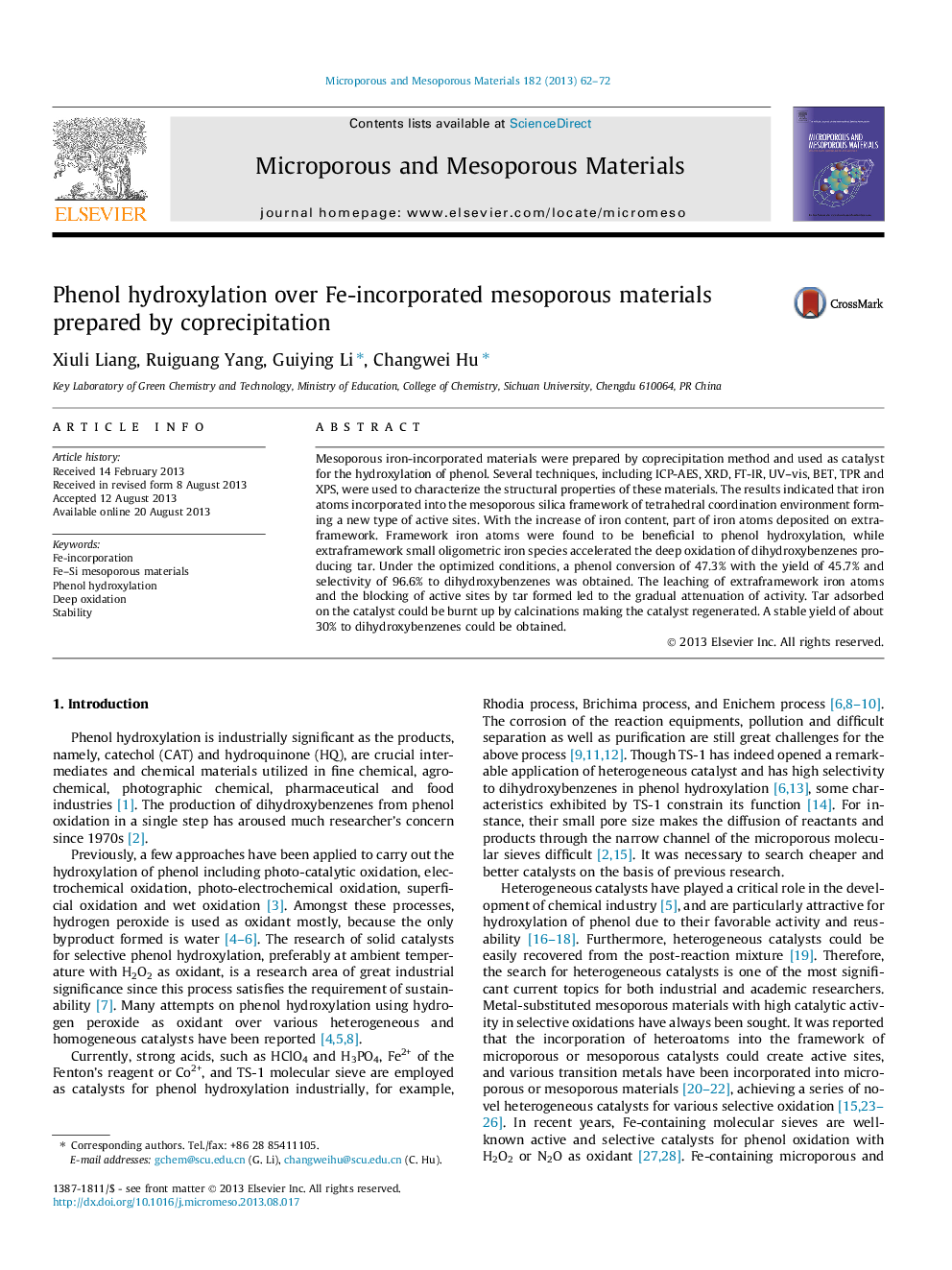| Article ID | Journal | Published Year | Pages | File Type |
|---|---|---|---|---|
| 73405 | Microporous and Mesoporous Materials | 2013 | 11 Pages |
•Fe-incorporated materials showed high catalytic performance for phenol hydroxylation.•Framework iron atoms were beneficial to phenol oxidation and were stable.•Extraframework iron atoms accelerated deep oxidation forming tar.•Extraframework iron leached in the reaction leading to deactivation.•Calcinations could remove tar formed and make the catalyst regenerated.
Mesoporous iron-incorporated materials were prepared by coprecipitation method and used as catalyst for the hydroxylation of phenol. Several techniques, including ICP-AES, XRD, FT-IR, UV–vis, BET, TPR and XPS, were used to characterize the structural properties of these materials. The results indicated that iron atoms incorporated into the mesoporous silica framework of tetrahedral coordination environment forming a new type of active sites. With the increase of iron content, part of iron atoms deposited on extraframework. Framework iron atoms were found to be beneficial to phenol hydroxylation, while extraframework small oligometric iron species accelerated the deep oxidation of dihydroxybenzenes producing tar. Under the optimized conditions, a phenol conversion of 47.3% with the yield of 45.7% and selectivity of 96.6% to dihydroxybenzenes was obtained. The leaching of extraframework iron atoms and the blocking of active sites by tar formed led to the gradual attenuation of activity. Tar adsorbed on the catalyst could be burnt up by calcinations making the catalyst regenerated. A stable yield of about 30% to dihydroxybenzenes could be obtained.
Graphical abstractThe framework iron giving UV–vis around 210 nm was stable for the hydroxylation of phenol.Figure optionsDownload full-size imageDownload as PowerPoint slide
